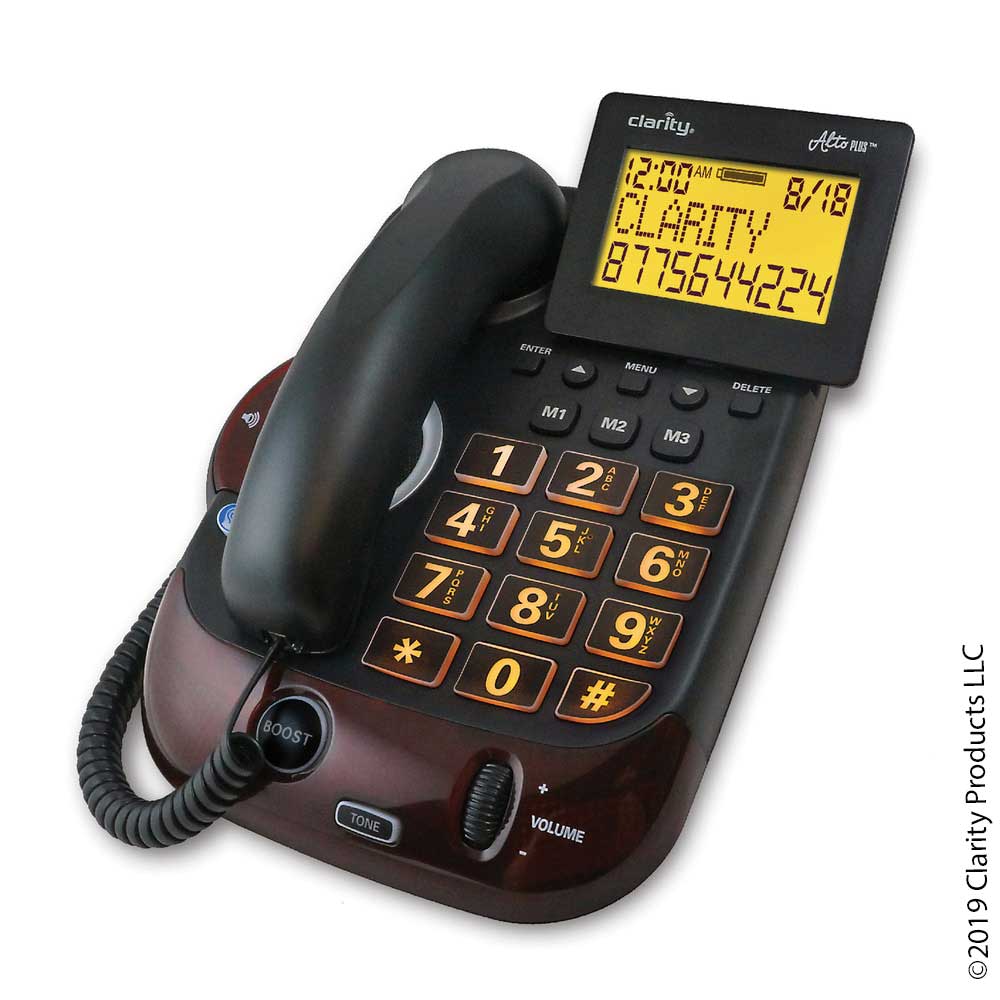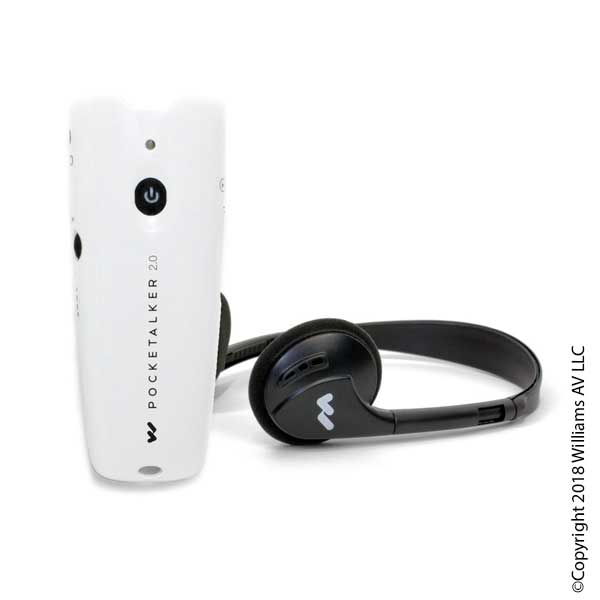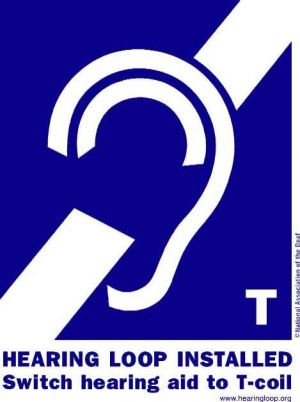|
www.HearingDirectory.ca |
What are assistive listening devices?
By Tonyshia Janssen, H.I.S, and Shantelle Shakes, coordinator, Hearing Directory Last updated on: February 25th, 2025 Assistive listening devices (ALDs) and assistive listening systems (ALS) enhance hearing and sound quality in noisy or challenging listening environments. They offer substantial hearing benefits when used with your hearing aids or without. Key points:
People with hearing loss use assistive ALDs to improve their ability to hear in challenging listening situations. You can use ALDs when hearing aids do not provide enough amplification or if you can't use hearing aids at all. They do not replace hearing aids but are helpful in specific listening situations. For example, ALDs can help you hear better while you're on the phone or watching television. They can even help you hear your alarm clock in the morning. There are many types of assistive listening devices for people with hearing loss. Some ALDs are available for public use at theatres and schools. Like hearing aids, you may be able to receive financial assistance for ALDs. This assistance will vary from province to province. To find the best ALD for you or learn about the financial assistance you could receive, contact your local hearing clinic and speak to a hearing healthcare provider. What are the four main types of assistive listening devices?There are many assistive listening devices available for private use. They are commonly split into four groups:
1. Amplified telephones
Amplified telephones feature an extra-loud ringer volume and tone control to help you hear conversations more clearly. Amplified telephones are by far the most common type of ALD. Amplified telephones help those who struggle to hear when talking on the phone. They are ideal for those with mild to severe hearing loss and they work best with the use of hearing aids. Amplified telephones have volume and tone settings to help you hear speech clearly. They also have an extra loud ringer volume, to ensure you hear every call. Amplified telephones come in a range of styles. They offer features like built-in speaker phones and memory-dial buttons. Note: most smartphones come with volume settings and are compatible with hearing aids. There are even some smartphones made with added amplification. 2. Notification systemsNotification systems replace alarms like alarm clocks, doorbells and smoke detectors. These devices are not only used to improve quality of life but are important for safety. Notification systems use sounds, light or vibrations to notify you of your surroundings. 
missing another appointment. Amplified alarm clocksAmplified digital alarm clocks have an extra loud alarm. You can adjust it to your own personal waking sound level. Many amplified alarm clocks come with a pillow shaker. You can pair it with the extra loud alarm or use it separately. The pillow shaker vibrates your pillow to wake you up. This helps if you miss even the loudest sounding alarm. You also avoid disturbing others in the room. Alert systemsAlert systems flash a light when the alarm clock, doorbell or telephone is ringing. You can also use these with smoke detectors. This can ease concerns that you won't hear your smoke alarm while you sleep without hearing aids. 3. Personal hearing amplifiers
help you have one-on-one conversations with ease. A personal sound amplifier is a device to help you hear when having a conversation with one other person. The device consists of a microphone attached to headphones. The speaker holds the microphone and the listener wears the headphones. Personal amplifiers go by different names, including "pocket talkers." The listener can adjust the volume of the amplifier to a comfortable level. Personal amplifiers are suitable for those with moderate to severe hearing loss. You can use them with or without a hearing aid. Remote microphonesRemote microphones are small devices you can use in challenging listening situations. You can use them, for example, while talking in a loud restaurant or in a car. The speaker wears the microphone and their speech is sent directly to your hearing aids. This allows you to hear the speaker at a level louder than any background noise. 4. TV streamersEnjoying TV can be difficult for someone with hearing loss. If you increase the volume, it can bother others around you. This makes the balance between too quiet and too loud impossible to find. TV streamers help those who cannot hear the TV when it is at a reasonable volume. They also provide noise reduction for others nearby. 
watching television at a comfortable volume. The streamer connects to the TV using a standard plug-in. It then uses radio waves to send the sound from the TV to a headset. With the headset, you can amplify sound from the TV to your liking. This allows everyone else to adjust the TV volume to a level that is comfortable for them. TV streamers are useful for those who cannot wear a hearing aid due to physical limitations. Public-use assistive listening systemsPublic-use listening systems are on public properties like worship centres, courtrooms, theatres, and schools. They include loop systems, FM or DM systems, and infrared systems. If you want to use these systems, discuss this with your hearing healthcare provider. TelecoilsSome systems require that your hearing aids or cochlear implants have a telecoil (or "t-coil"), a tiny device that uses electromagnetic fields to help your devices function wirelessly. T-coils are commonly used with telephones. They pick up a speaker’s voice through the phone and send it directly to your hearing aid for amplification. Wireless technology amplifies sound in both hearing aids even if you put the phone up to one ear. In t-coil mode, you will only hear the sounds sent to your hearing aid using the electromagnetic field. The hearing aid microphone will not pick up any background noises around you. Loop systemsAnother common use for t-coils is in settings that use a hearing loop system, such as a church or theatre. You can also use loop systems with conventional headphones, instead of hearing aids. The speech sound from the stage (or speaker, such as the pastor) goes through the loop system into the t-coil of your hearing aids. You benefit from only hearing the desired sound and not irrelevant noise around you. You can activate t-coils with the press of a button. Hearing aids also can switch automatically into t-coil mode. 
hearing loop is installed in the room. Infrared systemsInfrared systems are often used when you need privacy and confidentiality. Examples include courtrooms and banks. Infrared systems use light to send signals that can't go through walls. This provides another layer of privacy. FM systemsFM/DM systems send sound from an external microphone directly into your hearing aids. This produces clearer speech and reduced background noise during listening. DM systems are their digital equal and tends to have better sound quality. The transmitter picks up speech and sends it to the receiver in the hearing aids using radio waves. FM transmitter and receiver systems are portable. They are often used in classroom settings so the teacher’s voice is directly sent to the child’s hearing aids. Sound from a microphone, worn by the teacher, transmits to the student's hearing aids. They can also be used during business meetings, in restaurants, and at church — essentially, any busy, crowded or noisy environment.
Sound amplifying apps for smartphonesAndroid and iPhone smartphones have apps that can amplify sound surprisingly well. This makes amplified sound a nearly limitless experience. Reduce background noise and amplify conversations on the go—no bulky extensions required. Android has a free, built-in app called Sound Amplifier by Google LLC. It allows you to filter, adjust and amplify both the sound in your smartphone and the sounds around you. To use this amplifier, connect your headphones, then go to Settings in your Android. Go to Accessibility, then Sound Amplifier or Settings, Accessibility, and then Downloaded apps. iPhone’s app store offers a variety of sound amplifying apps to choose from. One is Sound Amplifier by Mighty Fine Apps LLC. You can amplify and isolate sounds, even use it with Bluetooth® compatible devices. Connect your headphones and download and tap the app to get started. For more sound amplifying apps, explore the app store for your smartphone. For all sound amplifying apps, you will need headphones to use them. While assistive listening devices are not replacements for hearing aids, they are supplemental for those who need extra help for their hearing problems in specific listening situations. Assistive listening devices are easy to install and use and can be found in many hearing clinics. Tonyshia Janssen, H.I.S
Shantelle Shakes, coordinator, Hearing Directory
You are reading about: Related topics
More information about hearing loss. Featured clinics near me
Schedule a hearing test with Healthy Hearing. Find a clinicThe Healthy Hearing Report |
|
www.HearingDirectory.ca |
What are assistive listening devices?
By Tonyshia Janssen, H.I.S, and Shantelle Shakes, coordinator, Hearing Directory Last updated on: February 25th, 2025 Assistive listening devices (ALDs) and assistive listening systems (ALS) enhance hearing and sound quality in noisy or challenging listening environments. They offer substantial hearing benefits when used with your hearing aids or without. |
 Are you located in the United States?
Are you located in the United States?


 Contributing author Tonyshia Janssen is a Hearing Instrument Specialist practicing at a hearing clinic for a major hearing aid provider. She earned her Hearing Instrument Specialist diploma from Conestoga College in Kitchener, Ontario. Tonyshia strives to help those with hearing loss by educating them with accurate and comprehensive information while also providing them with the necessary services for those who wear hearing aids. Tonyshia enjoys serving clients in her hometown community.
Contributing author Tonyshia Janssen is a Hearing Instrument Specialist practicing at a hearing clinic for a major hearing aid provider. She earned her Hearing Instrument Specialist diploma from Conestoga College in Kitchener, Ontario. Tonyshia strives to help those with hearing loss by educating them with accurate and comprehensive information while also providing them with the necessary services for those who wear hearing aids. Tonyshia enjoys serving clients in her hometown community.
 Shantelle Shakes is the coordinator for Hearing Directory. She has over nine years of experience in the health industry, with eight of those years in hearing healthcare. After graduating from York University with an honours BA in professional writing, minor in creative writing, Shantelle began her marketing career with a major hearing healthcare provider. Through a variety of roles within that company, Shantelle gained a thorough understanding of hearing health and the client experience. She aims to use her knowledge of the industry as well as her communications background to help others understand their hearing and connect with the hearing care they need.
Shantelle Shakes is the coordinator for Hearing Directory. She has over nine years of experience in the health industry, with eight of those years in hearing healthcare. After graduating from York University with an honours BA in professional writing, minor in creative writing, Shantelle began her marketing career with a major hearing healthcare provider. Through a variety of roles within that company, Shantelle gained a thorough understanding of hearing health and the client experience. She aims to use her knowledge of the industry as well as her communications background to help others understand their hearing and connect with the hearing care they need.